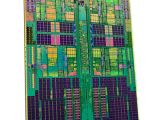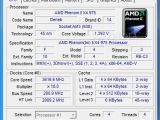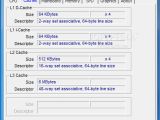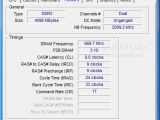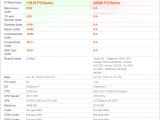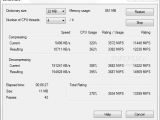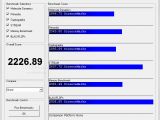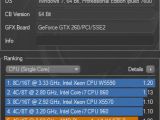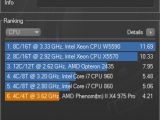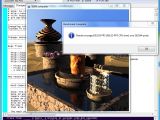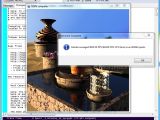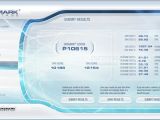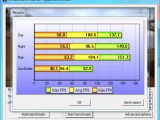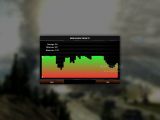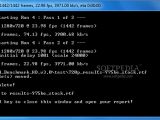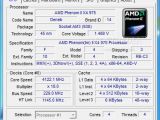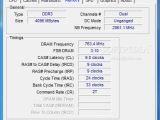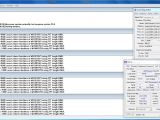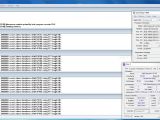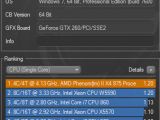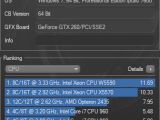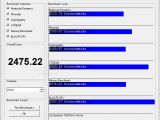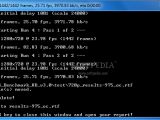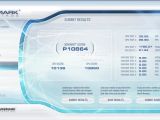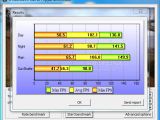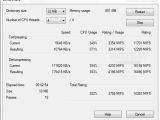Originally launched more than two years ago, AMD's Phenom II processor line has received constant updates along its lifetime, enabling it to stay competitive with Intel's mainstream and value parts, and now, the Sunnyvale-based company, released its fastest CPU to date, the Phenom II X4 975BE.
Before starting, its important to point out that the 975 Black Edition isn't a high end desktop chip, but more of a mainstream part primarily targeting upgraders.
As such, it will go head to head with CPUs such as Intel's recently launched Core i5 2400 or the Lynnfield based Core i5 750, both of them being priced similarly to the 975BE.
On AMD's side, its closest priced competitor is the Thuban Phenom II X6 1075T, that is only $5 more expensive than the $195 975 BE.
However, what makes the 975 BE a fierce competitor is not its low price or high clock rate, but the platforms that it runs on, as AMD has made sure not to change sockets as fast as other manufacturers have done (cough, Intel, cough), enabling a smooth upgrade path for its customers.
So, in theory, even users that have an old AM2+ motherboard paired together with a single or dual core processor, can buy this chip and get a healthy speed bump without having to shell out a bucket load of cash to build a new system.
Furthermore, just as impressive as its platform longevity, is AMD's commitment to the Phenom II line since the company has been pushing higher clocked versions of its core on a regular basis for more than two years now.
As a matter of fact, just three months ago AMD introduced new Daneb processors when it brought the 970 Black Edition SKU to market together with other five CPUs.
This launch however, is not as comprehensive, as the 975 BE is only accompanied by one other chip, the Phenom II X4 840 that is built on the Propus architecture.
Hardware Specifications and Testing Methodology The Phenom II X4 975 BE will be put through our extensive CPU benchmark test suite to find out what AMD's fastest processor to date is capable of while also covering aspects such as overclocking and operating temperatures.
But before detailing the test setup used and sharing a few words about the chip's architecture let's take a quick look at its specifications.
I have also enclosed a few pieces of information about the Phenom II X4 840, to put things in perspective, although this chip isn't a part of our review.
Phenom II X4 975 Black Edition Processor: Model Number & Core Frequency: X4 975 / 3.6GHz OPN: HDZ975FBK4DGM L1 Cache Sizes: 64K of L1 instruction and 64K of L1 data cache per core L2 Cache Sizes: 512KB of L2 data cache per core L3 Cache Size: 6MB (shared) Total Cache (L2+L3): 8MB Memory Controller Type: Integrated 128-bit wide memory controller Memory Controller Speed: Up to 2.0GHz with Dual Dynamic Power Management Types of Memory Supported: Up to DDR2-1066MHz and DDR3-1333MHz HyperTransport 3.0 Specification One 16-bit/16-bit link @ up to 4.0GHz full duplex (2.0GHz x2) Total Processor Bandwidth: Up to 37.3GB/s total bandwidth (DDR3) Packaging: Socket AM3 938-pin micro-PGA Fab location: Globalfoundaries Fab 1 module 1 (formerly AMD Fab 36) Process Technology: 45-nanometer DSL SOI (silicon-on-insulator) technology Approximate Die Size: 258mm2 Approximate Transistor count: 758 million Max TDP: 125 Watts AMD Codename: Deneb
AMD Phenom II X4 840 Processor: Model Number & Core Frequency: X4 840 / 3.2GHz OPN: HDX840WFK42GM L1 Cache Sizes: 64K of L1 instruction and 64K of L1 data cache per core L2 Cache Sizes: 512KB of L2 data cache per core Memory Controller Type: Integrated 128-bit wide memory controller Memory Controller Speed: Up to 2.0GHz with Dual Dynamic Power Management Types of Memory Supported: Up to DDR2-1066MHz and DDR3-1333MHz HyperTransport 3.0 Specification: One 16-bit/16-bit link @ up to 4.0GHz full duplex (2.0GHz x2) Total Processor Bandwidth: Up to 37.3GB/s total bandwidth (DDR3) Packaging: Socket AM3 938-pin micro-PGA Fab location: Globalfoundaries Fab 1 module 1 (formerly AMD Fab 36) Process Technology: 45-nanometer DSL SOI (silicon-on-insulator) technology Approximate Die Size: 169 mm2 Approximate Transistor count: 300 million Max TDP: 95 Watts AMD Codename: Propus
As you can certainly see from the above posted specifications, the 975 Black Edition is based on the Daneb core, sharing its architecture with that of the previous Phenom II processors.
This means that no major architectural changes made their way into the chip, except for some minor power consumption and thermal improvements that come from a refined manufacturing process.
As stated earlier, the processor is based on the AM3 package and is compatible with Socket AM2+ and Socket AM3 motherboards.
The Black Edition designation means that it caters to users interested in overclocking as the chip comes with a fully unlocked multiplier delivering greater flexibility when trying to find its maximum operational limits.
Today's tests were run on the same system as that used for the rest of our reviews, but we had to swap our P55 motherboard for a Gigabyte built GA-870A-UD3 that is designed around the AMD 870 chipset.
Paired together with the AMD SB850 southbridge, the board offers two PCI Express x16 slots (only one x16 electronically), two PCIe x1 and three regular PCI slots as well as six SATA 6Gb/s connectors.
To that standard specifications, Gigabyte added a NEC USB 3.0 controller that drives two additional SuperSpeed USB ports.
The power delivery circuit uses a 8+2 phase design, solid capacitors being used across the board.
The test system used: AMD Phenom II X4 975 Black Edition CPU Gigabyte GA-870A-UD3 motherboard Nvidia GTX 260 216 graphics card Kingston KHX2133C9AD3T1K3/6GX memory kit Kingston SSDNow V+ 64GB Integrated Audio and Network Windows 7 Ultimate 64-bit Operating system Arctic Freezer 7 Pro Rev. 2
Real-Life Performance Since the 975BE is clocked only 100MHz higher than the previous Phenom II X4 970 CPU, the results gathered can hardly be considered surprising and are in line with what we have come to expect from the Phenom II architecture.
This means that although competitive in the mainstream segment, it can hardly be considered a competitor for Intel's Nehalem based chips.
But, then again, this isn't AMD's goal for the 975BE, the six-core Thuban architecture being a better match for the high-end Bloomfield CPUs (although not even Thuban can touch some of the faster Nehalem parts).
However, most PC users would be satisfied by the performance level offered by Daneb, especially if they don't run heavily multi-threaded applications like video encoding or graphics rendering.
Taking a look at the numbers provided by our benchmark suite it becomes apparent where the 975BE is placed performance wise.
CineBench in particular is a good indicator of the chip's power since it provides a comparison base for the results gathered.
As you can see, the 975BE is pretty much at the bottom of the charts, although it does manage to make a pretty good impression in the single core mode.
Please also keep in mind that the 975 BE is compared to CPUs that run eight or even 16 virtual cores in a benchmark that is optimized to take advantage of every additional thread that it gets.
Otherwise, the results are pretty normal, the high 3.6GHz clock rate managing to raise performance to a level that would satisfy all but the most demanding buyers.
Overclocking
After taking a look at the performance offered by AMD's latest processor its time to see what advantages does overclocking bring to the game.
In order to find out the maximum stable overclock value, we started experimenting with the FSB, core voltage and multiplier values available in the BIOS to see how high the 975BE can be clocked.
Usually, C3 stepping Daneb cores stop somewhere in the vicinity of 4.1GHz when run on air and this is where the Phenom II X4 975 got us as it stopped at 4122MHz.
However, I am sure that a higher value could have been reached if we used a more efficient cooling solution, as the Arctic Freezer 7 clearly struggles with the 125W of heat dissipated by this CPU.
A better cooling solution would have allowed us to push a higher core voltage to the CPU, something along the line of 4.2GHz being entirely possible with a high enough voltage.
In addition, our efforts to raise the NB frequency beyond 2.1GHz also ended up with a failure.
So we stopped at 4122MHz CPU and 2061MHz NB and started firing up benchmarks again to see what we gained by overclocking the 975 BE.
As you can see, we got a decent increase along the board, even games posting better frame rates than before (although not by much).
Firing up the calculator we can see that the 14% higher clock speed translates into a 11% speed increase in ScienceMark, almost 12% in our x264 video encoding application and 8% in the 7-Zip benchmark, no a shabby result if you ask me.
Even more impressive is where did this new clock put the 975 BE in CineBench as it has become the fastest CPU in the single core version of the benchmark.
Furthermore, the 975 BE got really near to the Core i7 860 that packs a four-core design as well as Hyper-Threading support, raising the thread count to eight compared to the four computational threads available to the 975 BE, so the results are definitely worth while.
Conclusions AMD's Daneb core is truly a survivor since it managed to remain competitive in the mainstream segment for more than two years thanks to small bumps in speed offered by AMD along the way.
And the Phenom II X4 975BE is no different as it manages to make the Daneb core even faster, although by a small amount.
But the main question is if it's worth it.
At $195, the 975 Black Edition is competitively priced, but it all depends on the type of workload that you run and on the platform that you use.
I say this since, the Phenom II X6 1075T is available for a measely $5 more and delivers two additional cores making it a steal for whoever runs heavily threaded applications as video encoding or graphics rendering, for example.
Furthermore, if you are into overclocking, the 1075T can easily go somewhere in the vicinity of 4GHz with a decent cooling setup, thus offering an impressive bang for the buck and making it more competitive with the highly clocked 975 BE.
And there's the question of the platform used.
If you have an older Intel system and think about building a new machine, Sandy Bridge seems like the better solution since even non-K parts (except for the Core i3) can offer decent overclocks and the QuickSync technology and the AVX support make the architecture much better suited for the future.
For AMD upgraders it all depends on how much you want the performance delivered by the 975BE now.
If you can wait (and I see no reason why this won't be the case), holding until April could be a far better choice than going for the 975 as this is when Bulldozer will hit the market, driving prices of the Daneb parts down.
So, finally, if you were to ask me, the smart thing to do is to wait, as April isn't that far along and with a bit of luck you could get a 975 BE or a six-core 1075T for somewhere around $150.
The Good: - Compatible with existing AM2+ and AM3 motherboards - Competitive price - Adequate performance - Good overclocking capabilities - Acceptable TDP - Unlocked multiplier
The Bad: - Daneb architecture close to being pulled out - Small speed increase over 970 BE
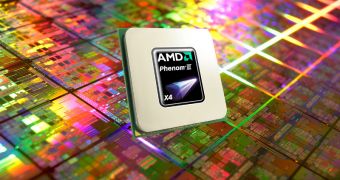
 14 DAY TRIAL //
14 DAY TRIAL // 
